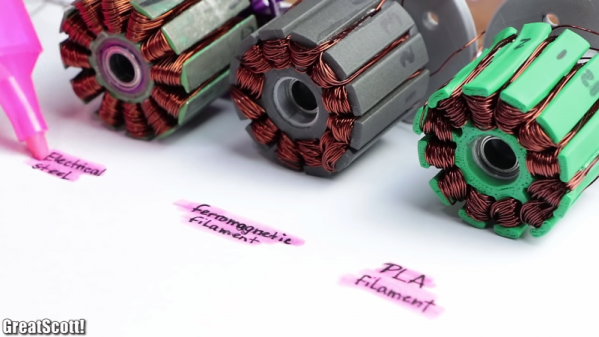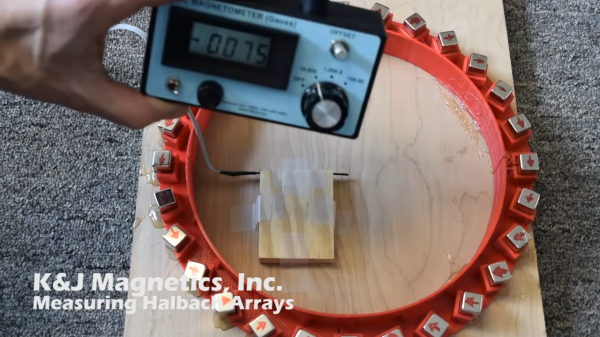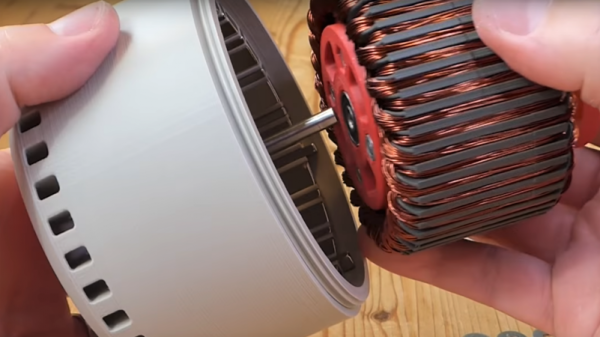On the face of it, harnessing wind power to heat your house seems easy. In fact some of you might be doing it already, assuming you’ve got a wind farm somewhere on your local grid and you have an electric heat pump or — shudder — resistive heaters. But what if you want to skip the middleman and draw heat directly from the wind? In that case, wind-powered induction heating might be just what you need.
Granted, [Tim] from the Way Out West Blog is a long way from heating his home with a windmill. Last we checked, he didn’t even have a windmill built yet; this project is still very much in the experimental phase. But it pays to think ahead, and with goals of simplicity and affordability in mind, [Tim] built a prototype mechanical induction heater. His design is conceptually similar to an induction cooktop, where alternating magnetic fields create eddy currents that heat metal cookware. But rather than using alternating currents through large inductors, [Tim] put 40 neodymium magnets with alternating polarity around the circumference of a large MDF disk. When driven by a drill press via some of the sketchiest pullies we’ve seen, the magnets create a rapidly flipping magnetic field. To test this setup, [Tim] used a scrap of copper pipe with a bit of water inside. Holding it over the magnets as they whiz by rapidly heats the water; when driven at 1,000 rpm, the water boiled in about 90 seconds. Check it out in the video below.
It’s a proof of concept only, of course, but this experiment shows that a spinning disc of magnets can create heat directly. Optimizing this should prove interesting. One thing we’d suggest is switching from a disc to a cylinder with magnets placed in a Halbach array to direct as much of the magnetic field into the interior as possible, with coils of copper tubing placed there.
Continue reading “Using The Wind And Magnets To Make Heat”















